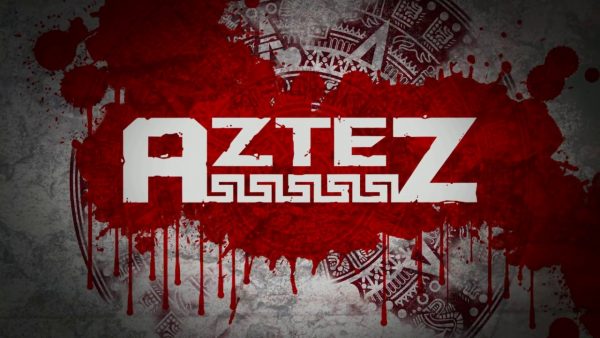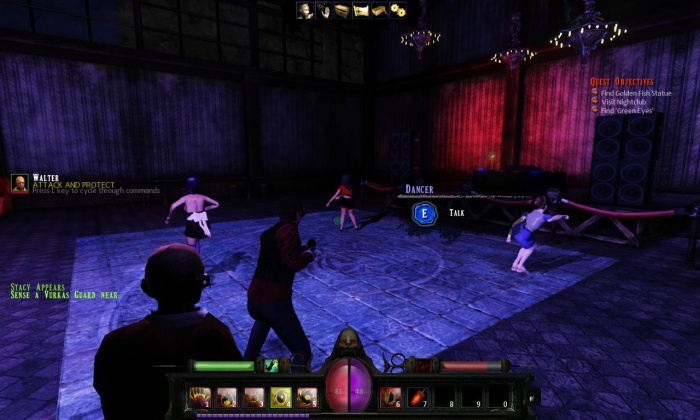Before Europeans made their way to these shores, the land that would soon come to be known as the Americas was rich with various indigenous cultures. Few are so famous as the Aztecs, whose descendants reside to this day in areas of central and northern Mexico around Mexico City. These days however, their numbers are greatly diminished, and they are known instead as the Nahua.
Aztez takes place in the post-colonial era of the Aztec Empire (more appropriately the Excan Tlatoloyan, or the Empire of the Triple Alliance) just as the Spanish begin their exploration into the continent. Players won’t see these events come into play until later in the game, provided that they are able to make it this far. Most of what happens revolves around the capital Tenochtitlan and her surrounding free and empire cities. I say “most of what happens” and not “story” because the story in Aztez is somewhat chaotic, and not altogether linear.
It’s hard to say for sure just who Aztez is for, exactly. The hexagonal map and turn-based events invite a board game-inspired aesthetic. Unfortunately this is not cohesive to the overall gameplay experience, and serves, in my opinion, only to cloud the events of Aztez, sullying any sense of narrative.
Welcome to Tenochtitlan
It’s the late 15th century. The Aztec Empire is at the height of its power, but not all is what it seems. In a Game of Thrones-like play-out. The ancient Empire and free cities of pre-colonial Mexico are falling constantly to supernatural predators, dissenting cities, and a seemingly chaotic amount of displeasure issued to them by the gods. It is your job as an Aztez, one of the elite warriors of the Emperor, to put down monsters and resistance, and regain the favor of the gods via combat.
In terms of story, the preceding paragraph pretty much sums it up. Various missions offer slight insight into the comings and goings of Tenochtitlan and her neighboring cities, but it’s clear very early on that the focal point of the game is the fighting. This is good, because it’s about the only part of the game that makes any sense, or is any real fun.
Featuring heavily-stylized 2D fighting, Aztez delivers on the front of battle. Unfortunately, the game works akin to that of a roguelike. Once your fighter dies, it’s game over and you must start your campaign all over again. If you get far enough and choose your missions wisely (and win them to boot) you can gain more, giving you essentially more “lives” as you continue to fight for the empire.
Events and combat each occur in turns. How many events you can tackle before more things happen depends on how many Aztez fighters you have at your disposal, so it may be wise to gain as many as possible, as soon as possible. A turn is finalized once all available Aztez have succeeded in a mission. Since it’s one mission per Aztez, the first handful of missions are going to go by pretty fast.
Mama Said Knock You Out
Once your turn has ended, it’s time for things to get serious. Any events that were not attended to will have effects that go off. These vary depending on the event, which are randomized and therefore their aftereffects can not be predicted in full. Usually, things like spies escaping or darkness falling over certain cities seems to be commonplace. What this does to the narrative is anyone’s best guess.
What players will see every turn is dissent. This occurs in free and Empire cities alike, and spreads after every turn unless the player has means to cancel it out. Like running out of Aztez, dissent spreading to Tenochtitlan is a lose condition, so make sure to do all that you can to prevent this from happening. Chances are high that you’ll likely die in combat before this becomes a thing, though.
Different events will have different rewards, and there are various bonus points that will be awarded on varying win conditions. These can be anything from engaging in a certain number of sacrifices to a large combo streak, or by using your “god attack.” Be sure to read the details of each event carefully. Their colors are coordinated based on their type of event and the rewards upon completion.
If you play your cards right, the items obtained over the course of Aztez can help you win the game. Be careful when spending them however, as each application doubles the cost for the next time you need to use them.
Let The Bodies Hit The Floor
If I’m going to be honest, the strategy side of Aztez feels like a really, really heavy afterthought to the game. It’s seemingly tacked-on attempts at narrative really could have been done better. If one doesn’t look carefully, it’s hard to find any story at all, even.
Fortunately, the best thing Aztez offers is its combat. The 2D fighting is the bread and butter of Aztez. Here you will fight hordes of enemies with different styles and varying techniques. Sometimes there are set numbers of enemies, while in festival events there are waves of assorted enemies that instead must be defeated within a certain time limit. Victory means progression, while death means starting over from turn one.
It is here that the game takes on a roguelike property, despite the fact that it’s not listed as such by the creators. I found this frustrating because it meant I was often playing very similar battle sequences over and over again without a whole lot of story to show for it. Eventually, I came to the disappointing conclusion that Aztez doesn’t really offer any story at all, and that was why the focal point was really the fighting.
Don’t get me wrong, the aesthetic of the battle sequences are very well done. Everything on screen is simplified, with the only color being the spilled blood of your enemies. Blood is absorbed to accomplish the “god attack” mechanic, and is most effectively obtained during a sacrifice. This was probably the only interesting mechanic Aztez had to offer. Everything else was just a run of the mill 2D fighting game.
First One to Complain Leaves With A Bloodstain
In the end, Aztez left me bored and more than a little disappointed. It took a profoundly inane stereotype of the ancestors of the still-existing Nahua people and channeled it into a game as two-dimensional as the fighting style, of which it seems to be very proud. It’s unfortunate that the game gets a little too into the violence that becomes the focal point of this indigenous community’s ancestors. Perhaps if they had delved deeper into their rich lore, they might have found a story to add to this game to give it some flavor.
Aztez is fun in short bursts, but will probably not hold up on extended playthroughs. Furthermore, it’s asking price of $20 is almost laughable for the minimal content it provides. If you’re a super fan of 2D fighters and like the roguelike gameplay, you might find this game interesting. However, I’d recommend waiting for a price cut or a sale before dumping the cash.



